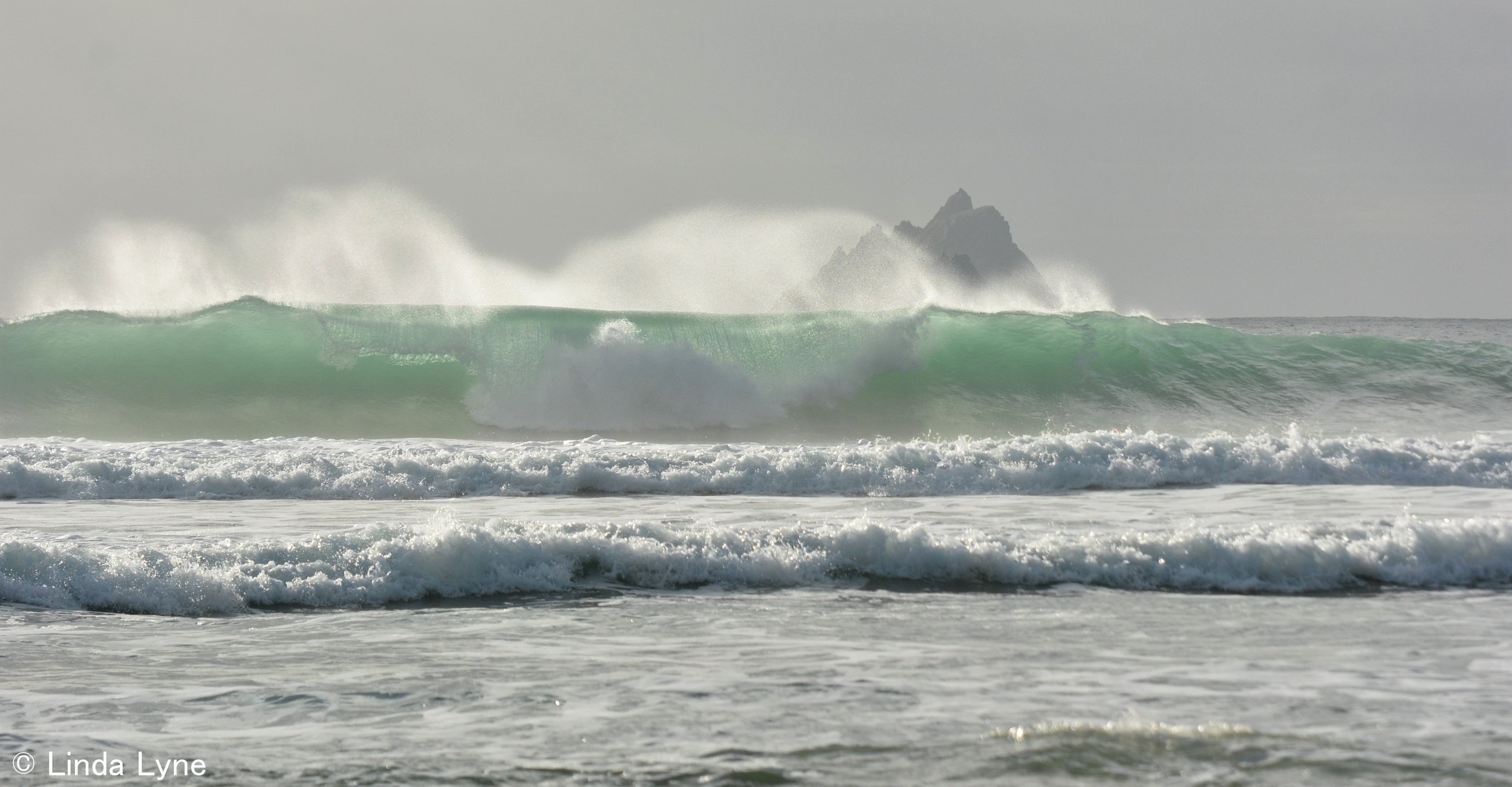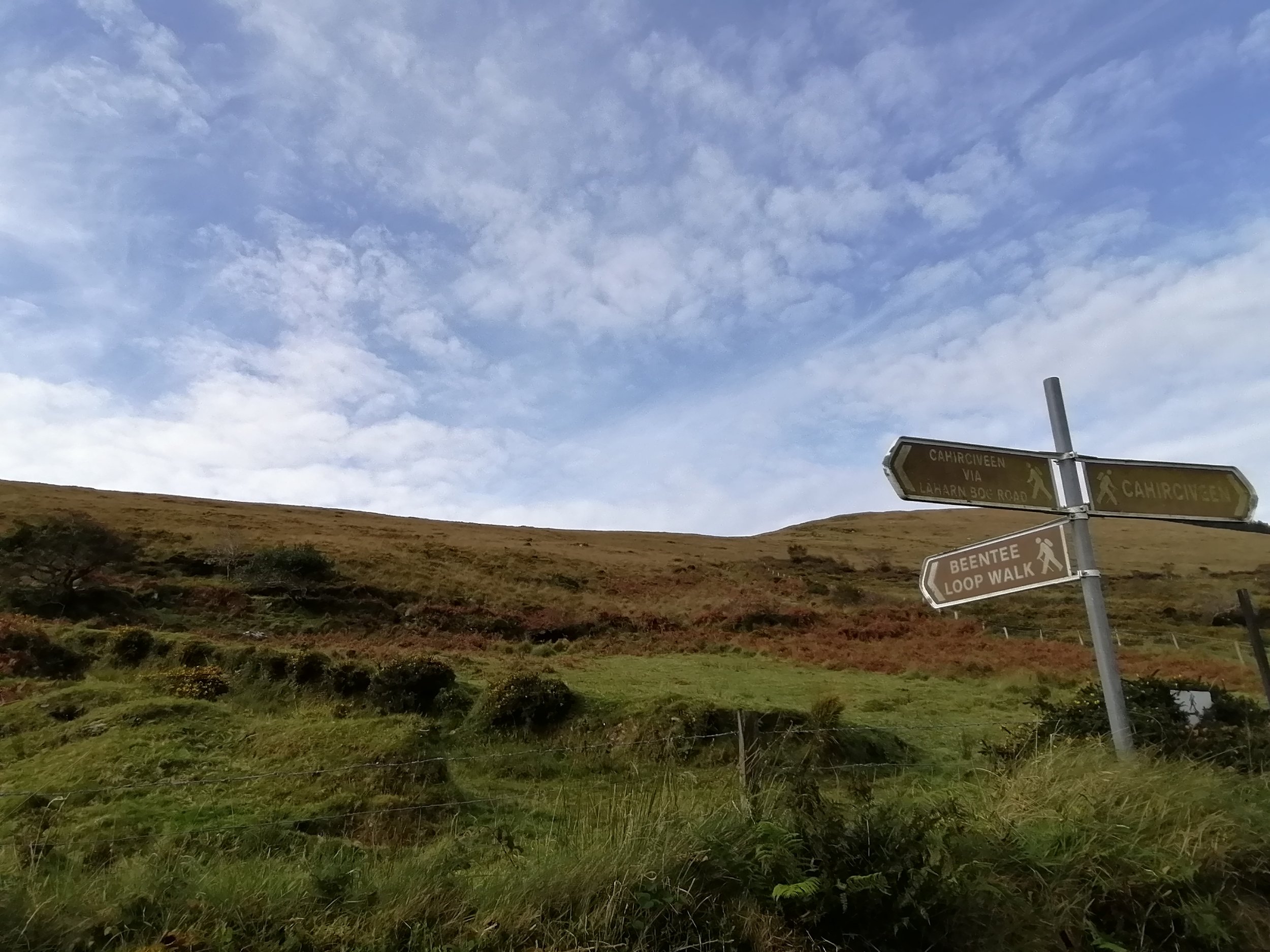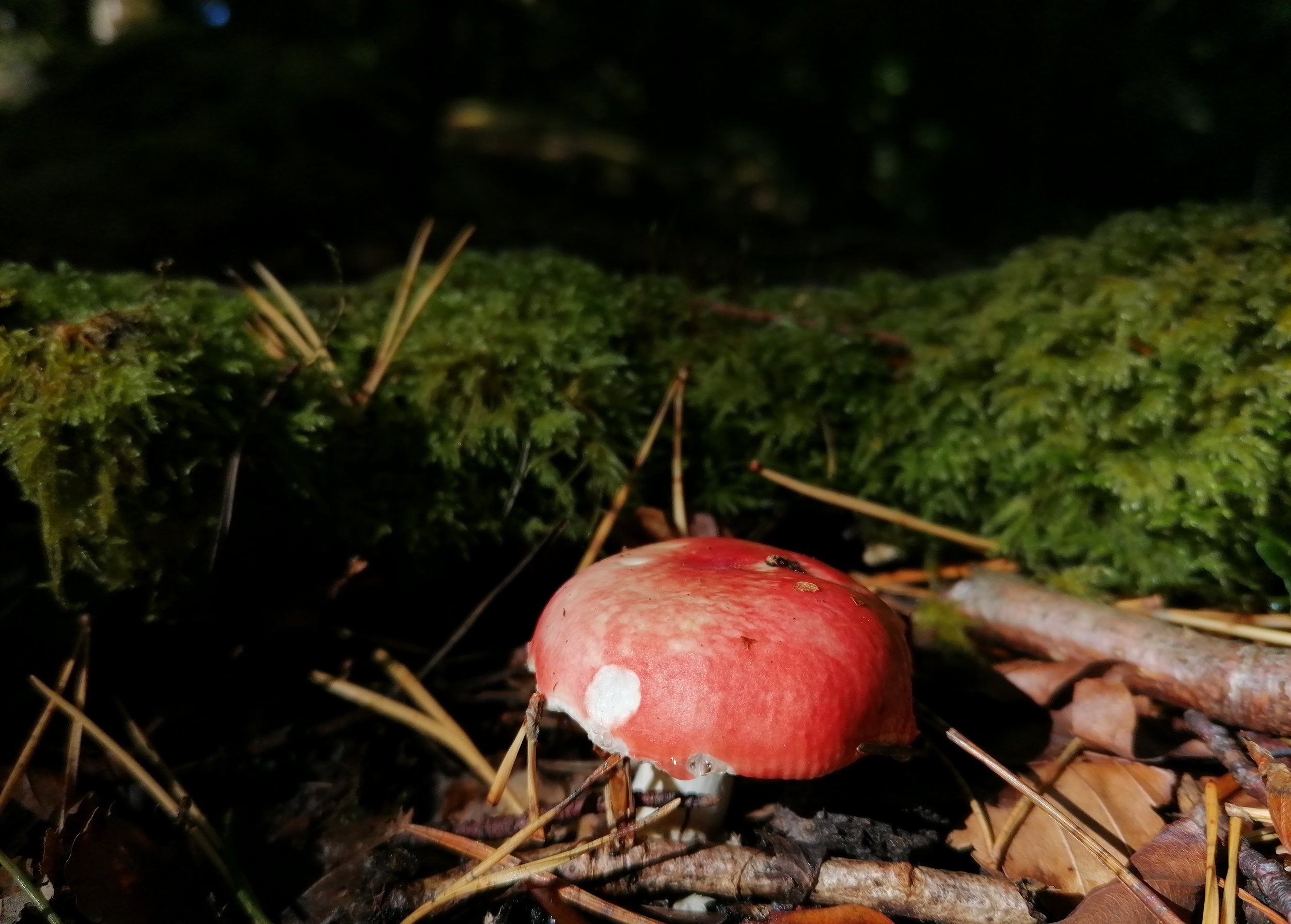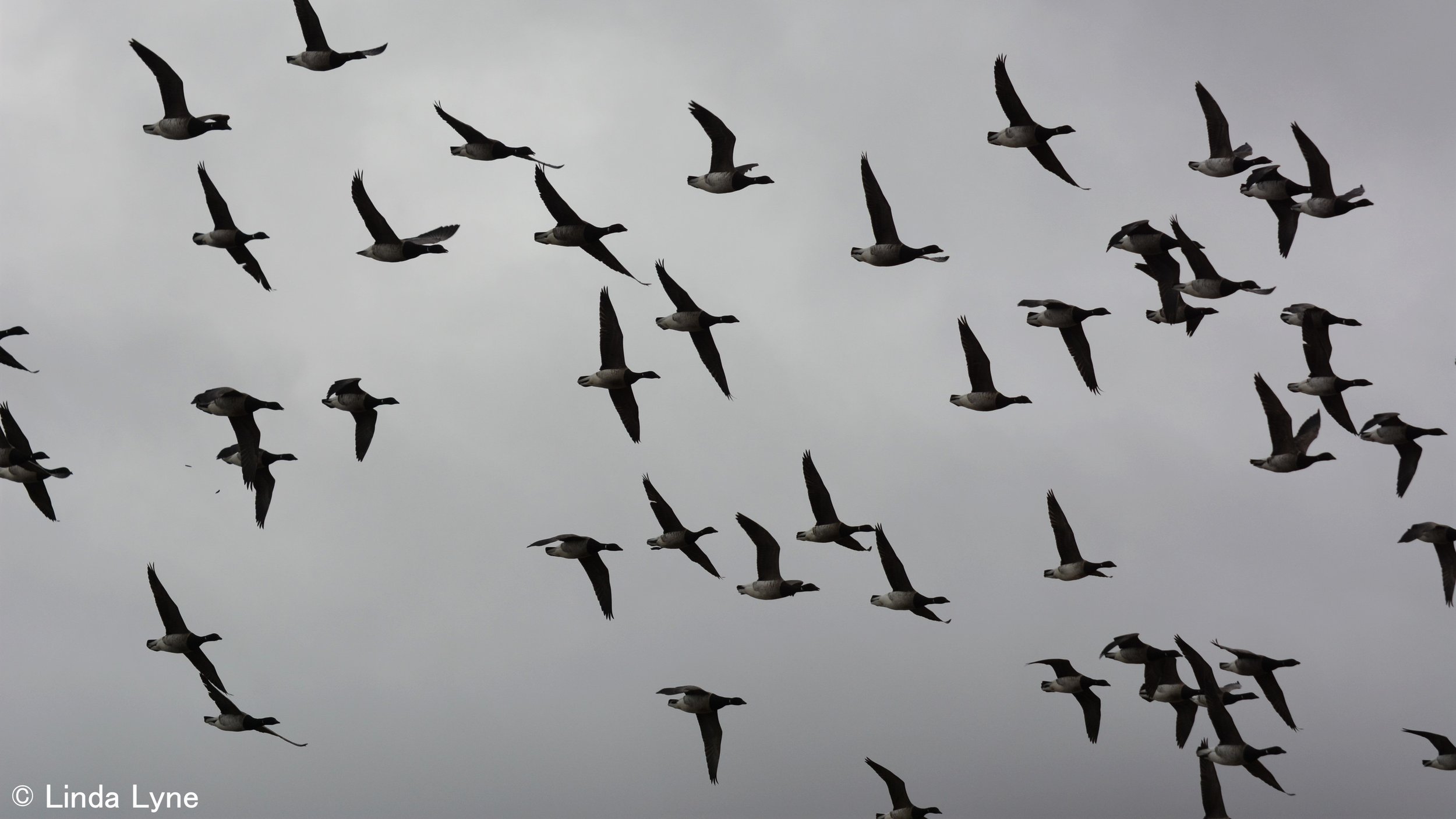
Autumn on Iveragh
LOCATION: Across Iveragh
A time filled with change
A Walk in the Woods
Fungi Boom Time
Strut for the Rut
Autumn Arrivals
Birds of a Feather
Autumn brings a transformation in the colours of the landscape, the quality of the light and the wildlife that is active on the Iveragh Peninsula. The leaves turn shades of golds, reds and yellows. Fungi fruiting bodies emerge like jewels. The air seems fresher, the light turns golden and the sea’s turquoise waves grow more fierce. Some of our wildlife species depart south for warmer climates while others, such as the Common Lizard (Earc Luachra), move underground for the cooler months to come. Our winters are mild enough for many birds to choose us as their destination for migration and the influx of waders is a remarkable autumnal event. There is the anticipation of the first returning flock of Brent Geese (Cadhan), announcing their arrival through gentle honking as they gracefully slide along the surface to dip their feet in the waters of a favourite site on Iveragh. The haunting call of the Curlew (Crotach or Cuirliún) becomes more frequent and the 'pee-weep' cries of a large flock of Lapwing (Pilibín) overhead has brought many an observer to a standstill. It's a time filled with change. Let's have a look at some of the highlights on Iveragh in autumn.
HOW TO EXPERIENCE THE MAPS:
The map locations can be seen on your mobile device. Clicking on the square icon in the top right hand corner of the respective map to open the map in a web browser or Google maps app. Or you can click on the square in the top left of the map to follow it on this page.
TRAIL GUIDE:
Below the maps is the guide for the map and the selected points.
There is also an alternative Storymap:
Autumn on Iveragh
1. A Walk in the Woods
The change in leaf colours is a sign of preparation to allow trees to conserve energy over winter. The shorter daylight hours and cooler autumn temperatures trigger a chemical change as chlorophyll (green) production stops and the anthocyanins (reds) and carotenes (yellow) are more prominent. Shedding leaves also protects trees from damage during strong winds and storms. There are many parts of Iveragh that take on these autumnal hues including the bracken blankets on the hillside. See the interactive map below for woodland walks where these changes can be experienced:
-

Faha Wood
With a 'Fairy Forest' for the little ones the trails around Faha include woodlands and views over Rossbeigh sand spit. Look out for wading birds in the tidal mudflats.
-

Kimego Loop
A conifer and eucalyptus plantation walk, this trail provides stunning views of Cahersiveen harbour. Keep an eye out for Red-billed Choughs (Cág Cosdearg)!
-

Beentee
Keep your eyes peeled for woodland birds and mammals in the section of native woodland and farmland at the beginning of the trail. At the summit you will be joined by Ravens (Fiach Dubh) overhead as you take in the incredible panoramic views of the Iveragh Peninsula
-

Derrynane Woods
Meander through Oak (Dair), Hazel (Coll) and Holly (Cuilinn) woodland. The golden bracken and blue seas in autumn make this one of the most beautiful corners of the Iveragh. Listen for curlew in the lagoon.
2. Fungi Boom Time
The aptly named Porcelain Fungus can be easily identified by the glossy porcelain-like cap.
When you are in the outdoors in Autumn keep your eyes peeled for mushrooms. It's a great time to explore the world of mycology, the study of fungi. Whether it's to photograph, identify as many as possible or maybe a foraging foray (be careful!), the sheer variety of fungus is astonishing. The colours, shapes, sizes and abundance add a treasure hunting element to any autumnal excursion. Some are the familiar 'mushroom' shape, others form fan-like structures or even miniature cups. Woodlands are excellent hunting grounds for fungi with many species protruding from decaying logs or emerging from the leaf litter. Many fungi can be found by looking for the habitat or tree they are associated with, but these associations are not accidental…
Green Elf-cup is a striking little fungus which is mostly found on deciduous trees such as oak.
The Fly Agaric toadstool is not just in fairytales.
Have you ever found a 'troop' or 'ring' of mushrooms? Ever wondered why this is? What we see as cups, umbrellas or puffballs above the surface are just the fruiting bodies. A whole network of fine hair-like mycorrhizae fungus can be found connecting soil and plants which allows the fungus to access nutrients. In some cases, this is a parasitic relationship, where one species takes nutrients from another, but in other cases it's a symbiotic one where both species benefit. For example: a fungus cannot photosynthesize so it absorbs certain nutrients, such as sugars, from a tree while the tree benefits from other nutrients the mycorrhizae network stores. These networks fan out in the soil with the fruiting bodies emerging at the edges like a ring! Fungi are a vital link in the complex food chains that occur. Their role in decomposing leaves and fallen wood returns nutrients to the soil while they also act as a food source for many invertebrates who in turn are an important food source for birds and mammals. You can find out more about Irish fungi and report your sightings here.
3. Strut for the Rut
A magnificent Red Deer stag in full rut grandeur.
A female Sika. They often see you before you see them!
Late September to early November is when strange sounds emanate from the hills and woodlands. It begins with antler-to-antler clacks of practice sparring before curt grunts turn to bellowing roars. It is time for the annual deer rut. Native Red Deer (Fia Rua) are largely restricted to upland areas of the Iveragh while the introduced Sika Deer (Fia Seapánach) are more widespread on the peninsula. Sika bucks produce a high-pitched descending squeal while a red stag roar is a declaration that carries far on the air. The roar of a stag sounds a message to other males to convey their intentions or announce their size. If two stags decide their bellows are equal, they will then walk side by side - a step to determine if they are similar in stature. If these two measures still do not decide the matter it is time for the last resort - a fight! Fights are risky as injuries can be sustained and fatal wounds can occur. The victor gains access to the females in the herd while the loser must lick his wounds and search for a new opponent. By late November, the rut abates and a truce descends for another year.
4. Autumn Arrivals
An influx of wading birds each autumn make for spectacular scenes at a number of sites on Iveragh.
Leave the woods and the hills to head for the coast. Every autumn, thousands of wading birds arrive on Iveragh. Curlew, Lapwing, Black-tailed Godwit (Guilbneach Earrdhubh), Plovers (Feadóg) and many more species return to favourite wetland sites to spend their winters here. Often coming from northern latitudes like Greenland or Iceland, these birds form large flocks in areas such as Cromane, Rossbeigh and Ballinskelligs Bay. Birdwatch Ireland and the National Parks and Wildlife Service survey these bird numbers every year, an important way to monitor species numbers and you can help too.
Wading birds follow the tides, searching for sand-dwelling invertebrates. Many have long probing beaks - like these black-tailed godwit - to search for food. At high tide they move to 'roost' sites together or onto nearby grasslands to continue probing for food. Travelling in flocks provides safety in numbers, many eyes will hopefully alert the others if a predator, such as a Peregrine Falcon (Fabhcún Gorm), is spotted nearby.
A number of species of goose make their way to Ireland each autumn and the Light-bellied Brent is the most common on Iveragh. They can form flocks of hundreds of birds which move together searching for algae, grasses and other plant-based foods. If you find some Brent, make sure to search the flock for a stray 'barnie', the Barnacle Goose (Gé Ghiúrainnor) which is similar but with a white face, or a Dark-bellied Brent.
A small group of Light-bellied Brent geese foraging by McCarthy's Castle, Ballinskelligs.
5. Birds of a Feather
Coal Tits are a familiar sight in woodlands and even our garden bird feeders. The white cheeked birds (left) are the main species from the UK & mainland Europe while the Irish sub-species has a yellow cheek (right).
A Curlew in flight.
Several bird species that are resident in Ireland have their numbers bolstered by incoming visitors each autumn. Irish breeding curlew numbers are in continuing rapid decline due to changes in habitat, so they are increasingly difficult to see during the summer. In the winter, the sight and sound of a curlew is more easily experienced. Hopefully, with the help of work such as the Curlew Conservation Programme, some of these winter individuals may stay in spring-time to boost the Irish population. LIVE has created some wonderful educational resources on the curlew - have a look here.
Smaller bird species, such as some which we find at our garden feeders, are also joined by a cohort of newcomers in the autumn. Coal Tits (Meantán Dubh), Goldcrests (Cíorbhuí), and even Robins (Spideog) migrate from other parts of Europe. With ground vegetation lower and branches free from leaves, it is a great time of year to observe these tiny but mighty travelers. We also receive many birds that are similar to those that already reside here. Often arriving at night, Redwing (Deargán Sneachta) and Fieldfare (Sacán) are in the same family as the Song Thrush (Smólach Ceoil) and Blackbird (Lon Dubh). Flocks are more easily seen during cold autumnal weather when they gather at food sources, such as Rowan (Caorthann) or Holly (Cuilinn) berries.
With so much going on, autumn is the perfect time to pop on an extra layer, fill a flask of tea and head for somewhere on the Iveragh you've never been before. Take a wildlife walk, somewhere you are familiar with in summer may feel like a new destination in autumn - you never know what you might find!














